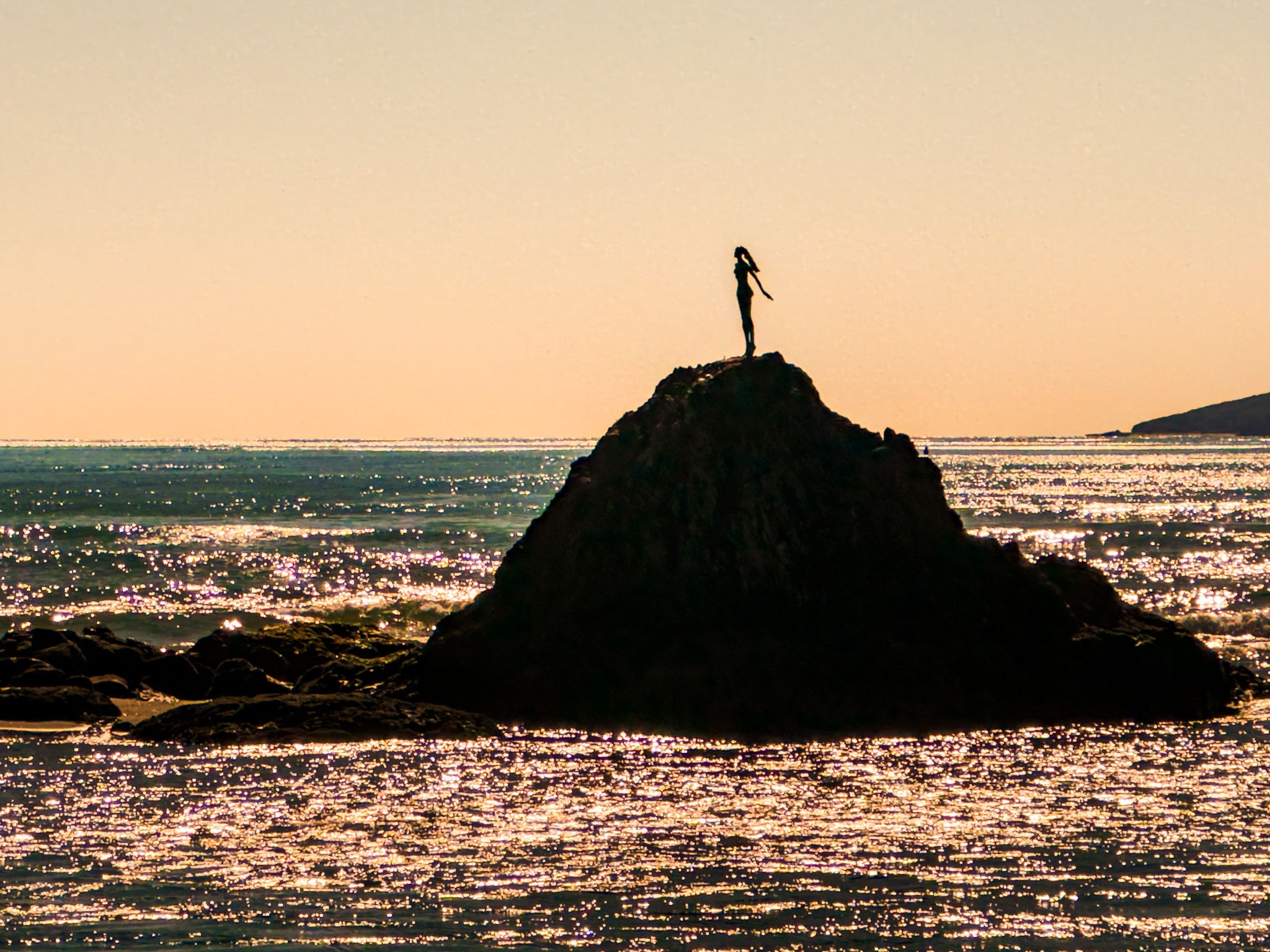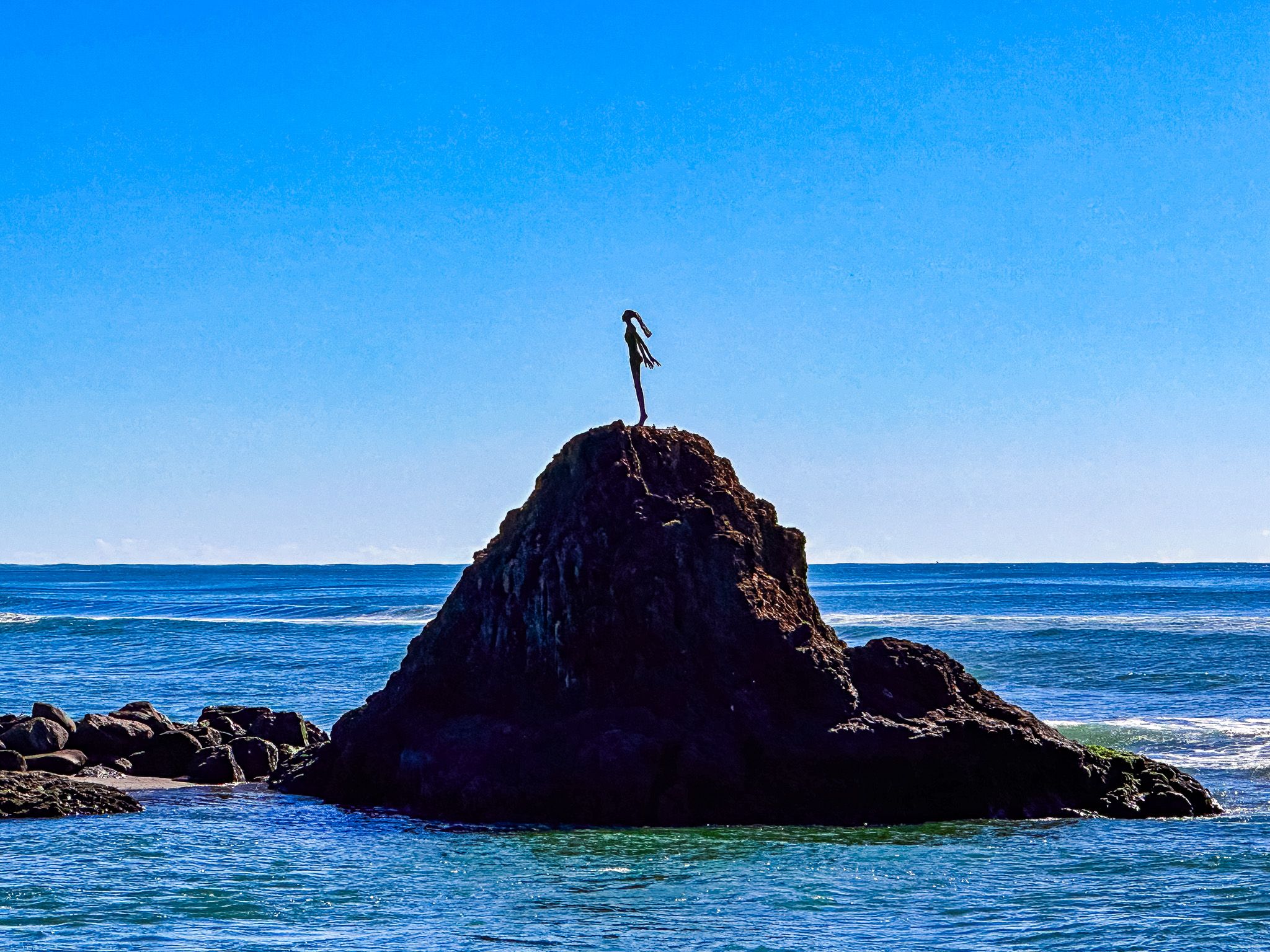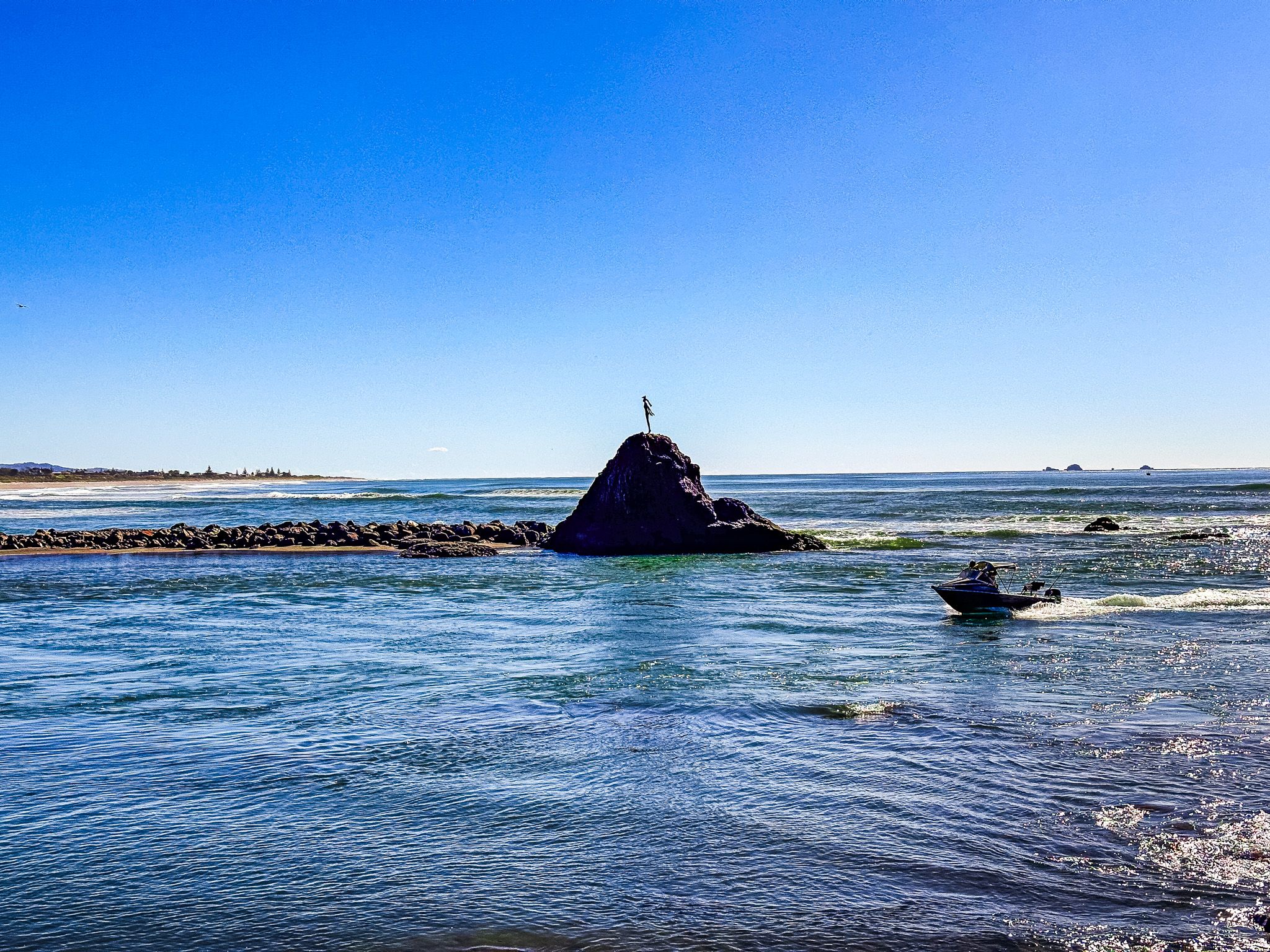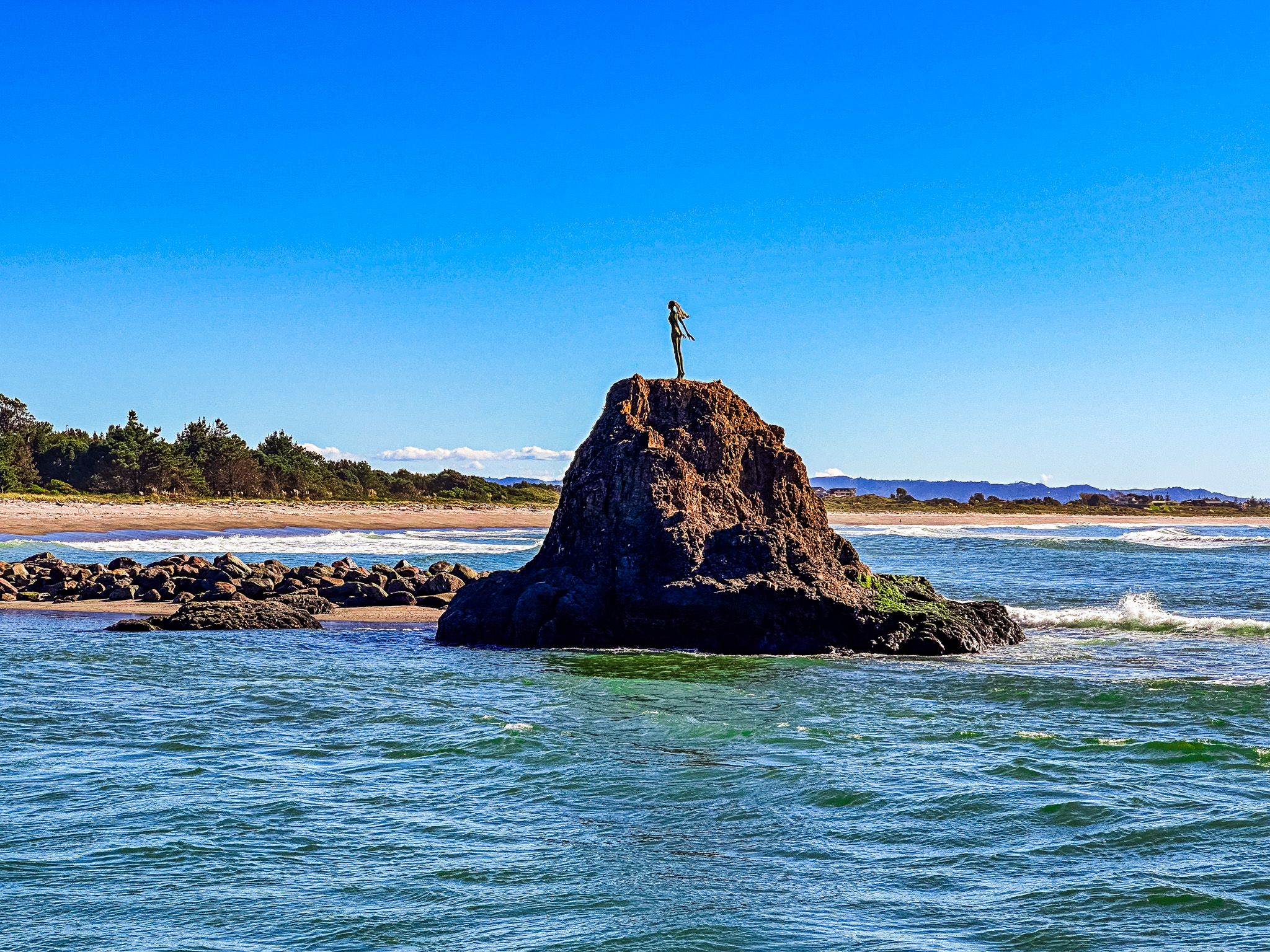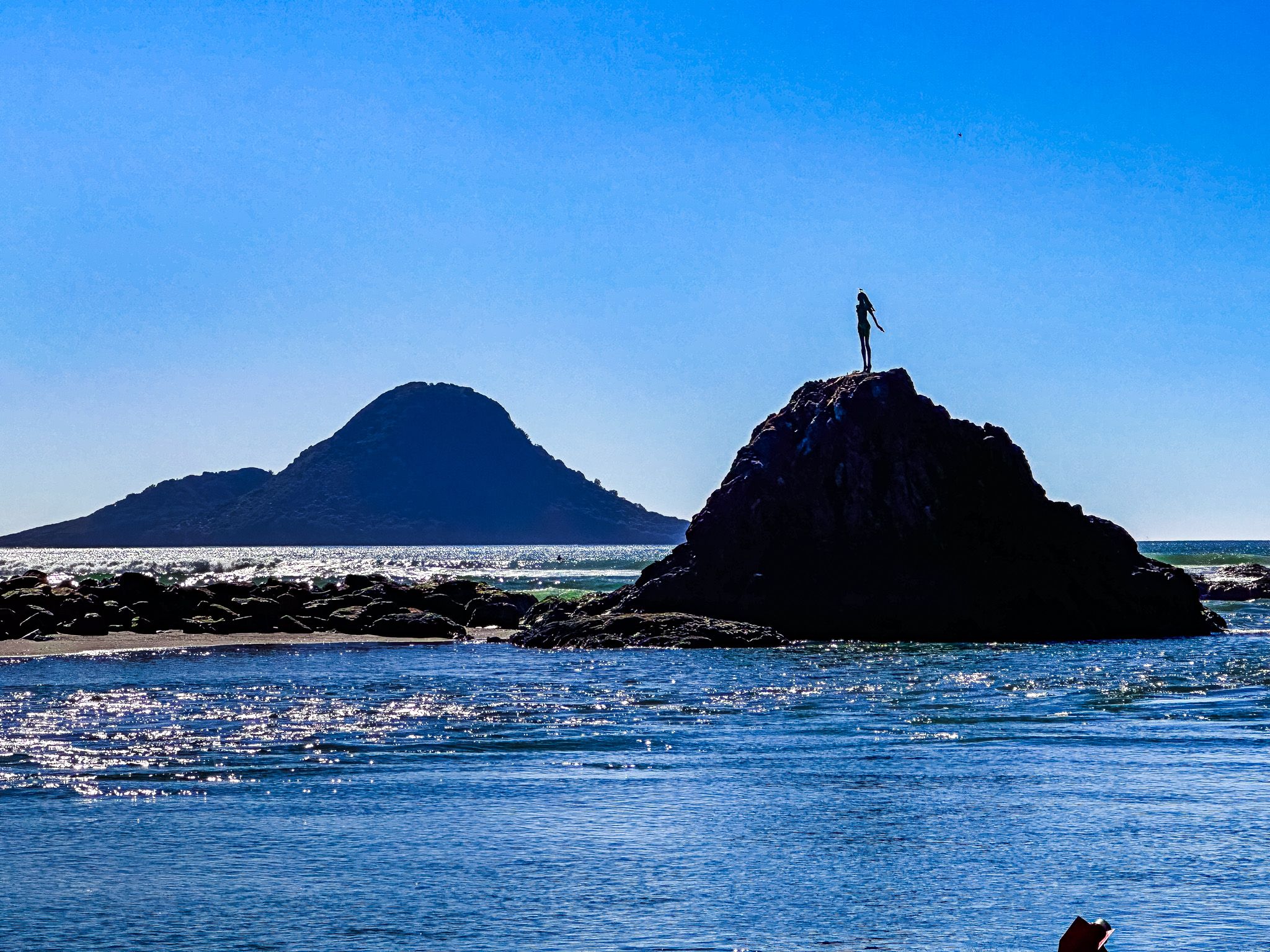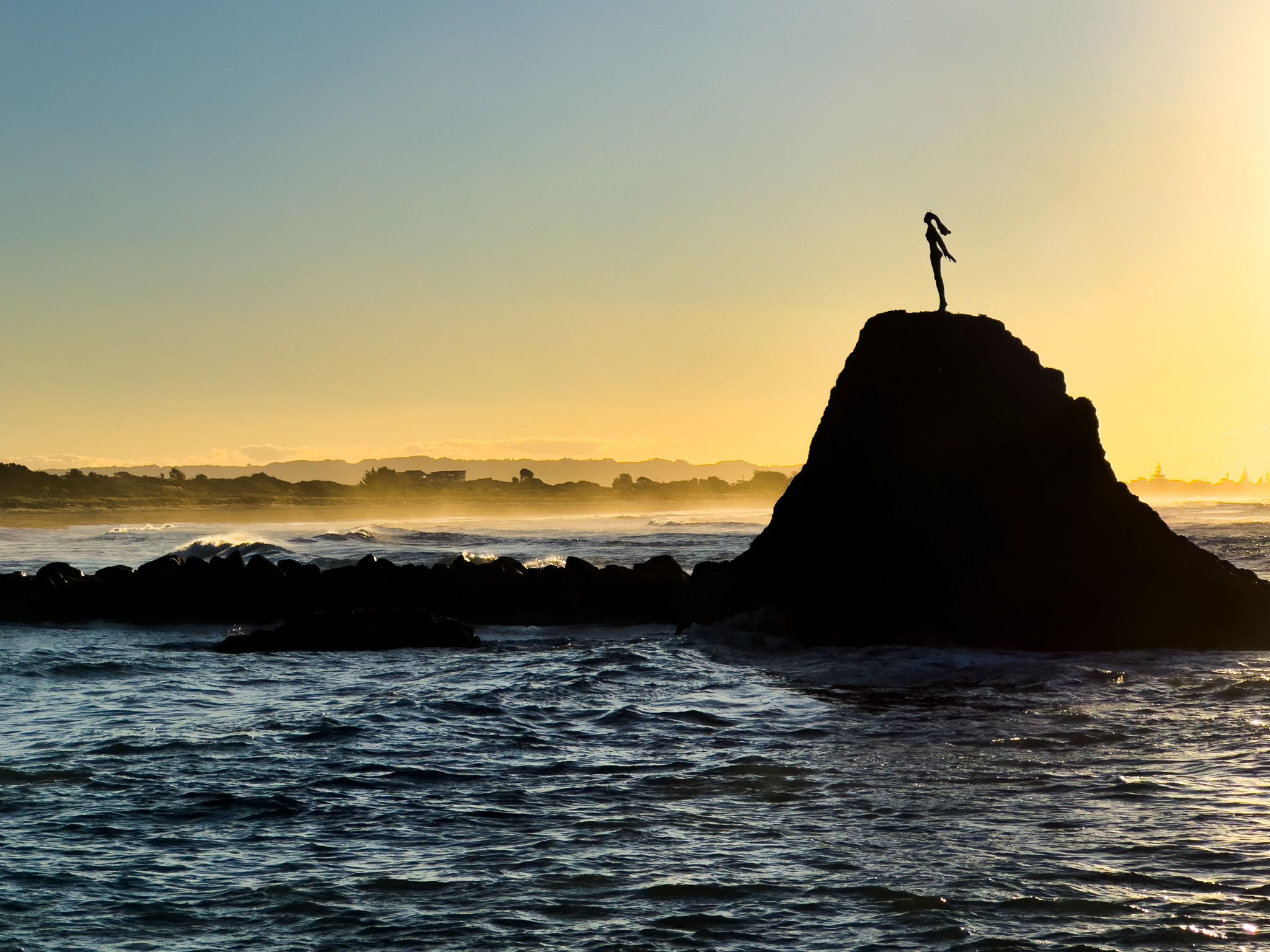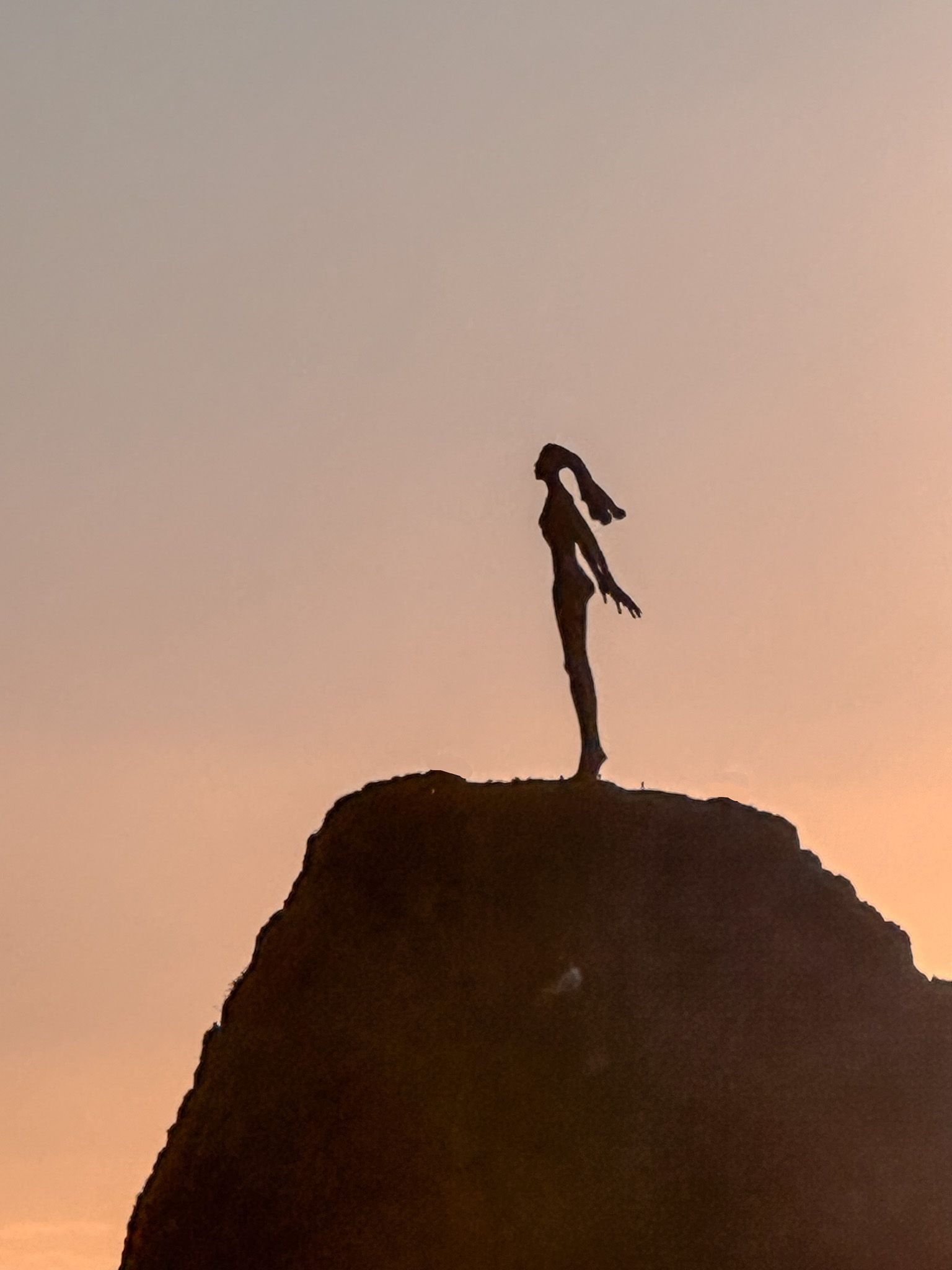Wairaka was the daughter of Toroa, who captained the ocean-going migration waka Mataatua and carried his family on its journey to Aotearoa from around 1300. She is believed to have been born on Ma’uke, the most easterly of Rarotonga’s islands, and was probably a young teenager when the waka arrived in the Bay of Plenty.
She is well known because of the heroic bronze statue on Turuturu Roimata on the west side of the Whakatāne River mouth in Whakatāne. Sir William Sullivan commissioned the statue. He was a mayor of Whakatāne and wanted to establish a memorial to his wife and a symbol of the bond between all people of the wider district. Jim Allen was the sculptor, and it was installed in 1965. For a long time, the statue was better known as the “lady on the rock” but is now more commonly referred to as Wairaka.
Wairaka is best known for the naming of Whakatāne. On arrival of the waka Mataatua in the region, the men went exploring. The women and children were left to wait on the waka, but it broke anchor and started to drift. Women were barred from paddling, but Wairaka broke the tapu, saying, "Kia Whakatāne au i ahau" ("I will act like a man"). The others joined in, and the waka was saved.
But this is just one story; she is believed to have had an extraordinary life. Before arriving in the Bay of Plenty, the waka visited several places around the upper North Island, ultimately settling in Tāmaki Makaurau, Auckland. There are many places in Auckland named after Toroa and his family members. Muriwai was Wairaka’s aunt, Puhinui was her mother, and there is Toroa Terrace in Mt Albert, Toroa Street and Toroa Point in Torbay. Toroa planted karaka saplings he had brought on the journey on the maunga that would become Ōwairaka. After a time, the family set out for the Bay of Plenty, which was described to them from an earlier visit by Toroa’s father, Irakewa.
Wairaka is believed to have lived around Whakatāne until her late 30s. But she missed her brother Whakapoi, who had stayed in Tāmaki Makaurau, so she went to find him. After arriving back at the maunga of the karaka saplings, Wairaka climbed to the summit and founded Te Pā o te Wairaka, or Ōwairaka (Mt Albert). She lived there for over 30 years, exploring and establishing her mana over the area. Late in life, she went back to Whakatāne, died there and was buried by the Whakatāne River at Opihiwhanaungakore.
There are many other stories about Wairaka, and a wonderful rendition can be found on the Honour of the Maunga website.

